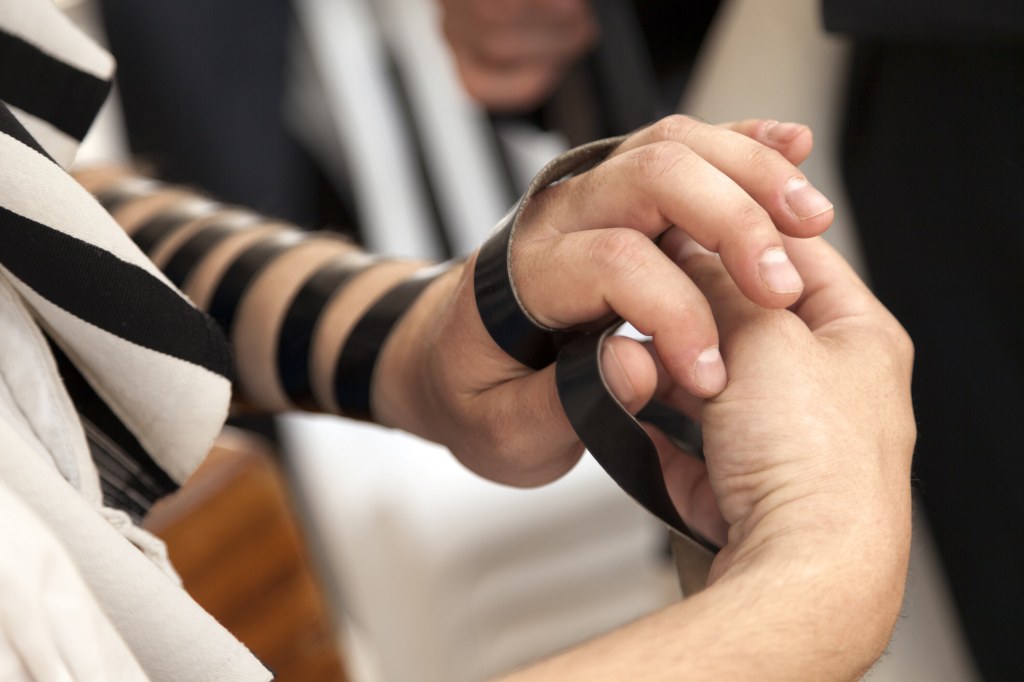Unlock Your Spiritual Connection: Do You Wear Tefillin On Chol Hamoed?
Do You Wear Tefillin on Chol Hamoed?
Introduction
Welcome, Fashion Enthusiast! Today, we explore an interesting topic that revolves around the traditions and customs of the Jewish community. In this article, we will delve into the question of whether one should wear tefillin on chol hamoed, a special time during the Jewish festival of Passover. So, let’s uncover the significance and practices related to tefillin and chol hamoed.
1 Picture Gallery: Unlock Your Spiritual Connection: Do You Wear Tefillin On Chol Hamoed?

Table: Information about Do You Wear Tefillin on Chol Hamoed
Topic
Summary
What
Explanation of tefillin and chol hamoed

Image Source: squarespace-cdn.com
Who
Identification of individuals involved
When
Specific times during chol hamoed
Where
Locations where tefillin should be worn
Why
Reasons behind the practice
How
Procedure for wearing tefillin on chol hamoed
Advantages
Benefits of wearing tefillin on chol hamoed
Disadvantages
Drawbacks of wearing tefillin on chol hamoed
FAQ 1
Answer to frequently asked question 1
FAQ 2
Answer to frequently asked question 2
FAQ 3
Answer to frequently asked question 3
FAQ 4
Answer to frequently asked question 4
FAQ 5
Answer to frequently asked question 5
Conclusion
Encouragement for readers to take action
Final Remarks
Important closing thoughts and disclaimers
What
First and foremost, let’s understand what tefillin and chol hamoed are. Tefillin, also known as phylacteries, are a set of small black leather boxes containing sacred Jewish texts. These boxes are worn by Jewish men during morning prayers as a physical and spiritual connection to God. On the other hand, chol hamoed refers to the intermediate days of the Passover and Sukkot festivals when certain restrictions are relaxed.
During chol hamoed, there is a debate among Jewish scholars regarding the wearing of tefillin. Some argue that tefillin should be worn as usual, while others believe that they should not be worn during this time. Let’s explore the different perspectives.
Who
The question of wearing tefillin on chol hamoed primarily concerns Jewish men who regularly wear tefillin during their morning prayers. It is a matter of personal and religious observance, and each individual has the freedom to decide whether or not to wear tefillin during this time.
When
Chol hamoed occurs during the intermediate days of Passover and Sukkot, which typically fall on the 15th to 21st of the Hebrew months of Nisan and Tishrei, respectively. During these days, there are specific prayer times when tefillin are traditionally worn. However, the debate arises whether these prayer times during chol hamoed should include the wearing of tefillin.
Where
Traditionally, tefillin are worn in a prayer setting, such as a synagogue or a private prayer space. However, during chol hamoed, when the restrictions are relaxed, some individuals may choose to wear tefillin in other locations as well, such as at home or outdoors, as long as the appropriate prayer times are observed.
Why
The reasons behind the debate on whether to wear tefillin on chol hamoed stem from differing interpretations of Jewish religious texts and customs. Some scholars argue that wearing tefillin on chol hamoed is an additional mitzvah (commandment) and should be continued as a sign of devotion and spiritual connection. Others believe that since chol hamoed is a semi-festive period, it is not necessary to wear tefillin during this time.
How
If one chooses to wear tefillin on chol hamoed, the procedure is similar to the regular practice. The tefillin consist of two boxes, one placed on the head and the other on the arm, and are secured with leather straps. The specific prayers and blessings associated with putting on the tefillin are recited during the process.
Advantages and Disadvantages
There are both advantages and disadvantages to wearing tefillin on chol hamoed. Let’s explore them:
Advantages
1️⃣ Enhanced spiritual connection and devotion to God during this sacred time.
2️⃣ Consistency in religious practice and observance.
3️⃣ Serving as a reminder of one’s commitment to Jewish traditions.
4️⃣ Potential for increased focus and concentration during prayer.
5️⃣ Strengthening of personal and communal identity.
Disadvantages
1️⃣ Interference with the semi-festive nature of chol hamoed.
2️⃣ Potential distraction from the relaxation and enjoyment of the holiday.
3️⃣ Different interpretations of religious texts leading to confusion.
4️⃣ Increased pressure on individuals to conform to specific practices.
5️⃣ Limited availability of convenient prayer spaces during chol hamoed.
FAQs (Frequently Asked Questions)
FAQ 1: Is it mandatory to wear tefillin on chol hamoed?
No, wearing tefillin on chol hamoed is not mandatory. It is a matter of personal choice and religious observance.
FAQ 2: Can women wear tefillin on chol hamoed?
Though it is less common, some Jewish women choose to wear tefillin. The same considerations and debates regarding wearing tefillin on chol hamoed apply to women as well.
FAQ 3: Can tefillin be worn during all prayer services on chol hamoed?
There are specific prayer services during chol hamoed when tefillin are traditionally worn. It is important to consult with a knowledgeable religious authority or follow the customs of your community.
FAQ 4: Can tefillin be worn outside of a synagogue during chol hamoed?
Yes, tefillin can be worn outside of a synagogue during chol hamoed, as long as the appropriate prayer times are observed. However, it is important to be mindful of the surroundings and the comfort of others.
FAQ 5: Are there any exceptions to the tradition of wearing tefillin on chol hamoed?
Some individuals may have specific circumstances or personal reasons that exempt them from wearing tefillin on chol hamoed. It is advisable to consult with a religious authority or spiritual mentor to understand the nuances of these exceptions.
Conclusion
After exploring the different perspectives and insights regarding wearing tefillin on chol hamoed, it is clear that this is a personal choice based on religious interpretation and individual devotion. Whether one chooses to wear tefillin during the intermediate days of Passover and Sukkot or not, the most important aspect is the sincerity and intention behind their religious observance.
Remember to consult with knowledgeable religious authorities and engage in meaningful discussions to better understand the customs and practices of your specific community. By doing so, you can make informed decisions that align with your spiritual beliefs.
Final Remarks
In conclusion, the topic of wearing tefillin on chol hamoed brings to light the diversity and rich traditions within the Jewish community. It is essential to approach these discussions with an open mind, acknowledging that custom and interpretation may vary. The information provided in this article serves as a general guide and should not replace personalized advice from religious authorities. Let us embrace the beauty of religious diversity and continue to engage in respectful conversations that deepen our understanding of different practices.
This post topic: Wear



